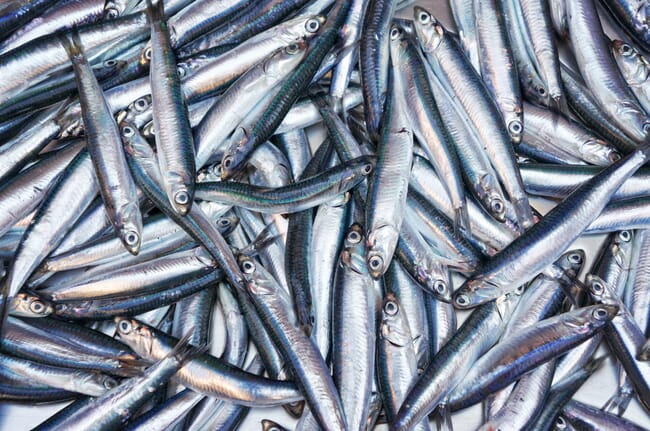So concludes a new report, which analyses 26 reduction fishery stocks worldwide, also identified an increase of 2 percent in the volume of fish from fisheries that are considered “poorly managed.”
“All of the fisheries already have relatively good management schemes in place; continued efforts in addressing the remaining management issues, and also in complying with the scientifically advised measures, would likely contribute to a faster recovery of the respective stocks to healthy levels,” the report’s authors wrote.

Other key findings from the report, which was written by the Sustainable Fisheries Partnership(SFP), include:
- Three percent of the total catch volume of the reduction fisheries in the analysis comes from stocks classified as “very good condition.” As in the four previous editions of this report, this corresponds to a single fishery: Antarctic krill - Atlantic Southern Ocean. This stock is managed by the Commission for the Conservation of Antarctic Marine Living Resources (CCAMLR) and has had MSC-certified fisheries since 2010.
- Eighty-eight percent of the total catch volume in the analysis comes from stocks that are considered to be “reasonably well-managed (or better),” (ie that score 6 or above on all five criteria outlined by SFP’s FishSource database), a three percent decrease compared to last year. The stock with the largest contribution to this category continues to be the Anchoveta - Peruvian northern-central stock, which represents approximately 32 percent of the total catch, compared to 33 percent in the previous overview.
- Twelve percent (1.1 million tonnes) of total reduction fisheries catch comes from fisheries classified as “poorly managed,” a rise of 2 percent compared to last year. The volume coming from poorly managed fisheries is still, however, considerably lower than that observed prior to 2017.
However, the report stresses that: "There is a critical need to develop and expand improvement efforts in Southeast Asian fisheries, which are not included in the report’s analysis. These fisheries likely represent close to half of the global catch for this sector, yet are poorly understood and plagued by persistent environmental and social issues."
“Fish meal and fish oil are important feed ingredients that provide key nutrients to farmed shrimp and fish,” said Dave Robb, sustainability director, animal nutrition and health, at Cargill. “But it’s important they are sourced responsibly. Fishery improvement projects (FIPs) provide an important opportunity to drive sustainable development in areas like Southeast Asia, South Asia, and Africa, helping to improve fisheries management and activities for the long-term benefit of all participants. Cargill is already engaged in some FIPs and encourages other actors in this sector to also engage in such schemes, to help secure a sustainable future for fishmeal and oil. Collaboration is key: together, we can help achieve environmentally and socially sustainable fisheries.”
The ecological impacts of reduction fisheries on the wider marine ecosystem are not fully understood. A guest article by Birdlife International in the report highlights the vulnerability of seabirds to restrictions in the availability of forage fish that result from fishing.
Commenting on the results, Dave Martin, deputy programs director at SFP, said: “Despite a minor drop in performance this year, the fishmeal and fish oil industry in Europe and Latin America has built a good track record of responsible sourcing, although there is inevitably still room for improvement. Given this, it is urgent that global industry turn its attention squarely to Southeast Asia.”




